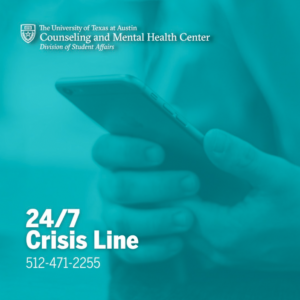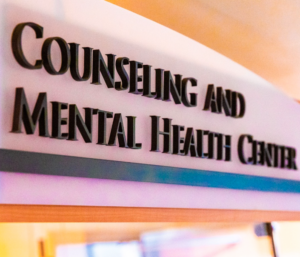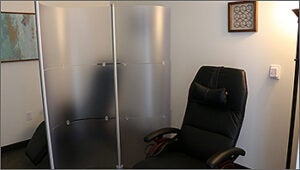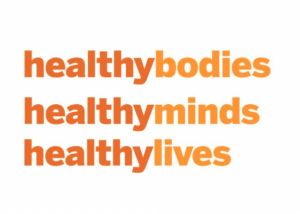Travel Plans for Spring Break? Get a Travel Signature.
- Spring Break is around the corner and travel plans are in full swing.
- When you head back to Austin, you will need a TRAVEL SIGNATURE on your I-20.
Do I need a travel signature to re-enter the U.S.?
- Yes.
- A valid, unexpired travel signature on your immigration document (I-20) is required for re-entry into the U.S. after you travel to another country.
- The travel signature lets U.S. Customs and Border Protection (CBP) know that you have maintained your F-1 status and are eligible for re-entry into the U.S.
When and how can I receive my travel signature?
- First check for a travel signature on Page 2 of your most recent Form I-20.
-
- Be sure to print out the I-20 and sign the bottom of the first page in ink as CBP will only accept physical documents.
- The travel signature on your I-20 is valid for 12 months or until your program end date, whichever is earlier.
- If your travel signature will still be valid on the day you plan to re-enter the U.S., you don’t need to request a new one.
-
- If you still need a travel signature, plan to come to the Texas Global office before you travel.
-
- Spring Break is March 17 – 21.
- ELC offers in-person student services and advising Monday, Tuesday, Thursday, and Friday from 8:30 am to 12:00 pm and 1:00 to 5:00pm.
- Did you know that the ELC has three (3) DSO’s that can sign your I-20 for travel?
-
- Jack Taylor, Matt Hartley, and Teresa Baker are happy to help.
-
-
Immigration Documents Required for Re-Entry into the U.S.
- Before you leave, be sure you have gathered all the documents you’ll need for your return.
- These include:
-
- Unexpired Passport
-
- Must be valid at least six months into the future.
-
- Valid F-1 Visa
- SEVIS Fee Receipt
-
- Lost your SEVIS fee receipt? Don’t worry!
- Go to the SEVIS fee website and click on “Check I-901 Status” to obtain a copy of your receipt.
-
- Valid I-20 Form
-
- Must have a valid travel signature.
-
- Unexpired Passport
-
When to Carry Your Immigration Documents
- We recommend you carry all your immigration documents in case of an emergency if you plan to travel within the U.S.
-
- Be sure to take your most recent I-94 with you. You can look that up here.
-
- If you’re traveling anywhere within 100 miles of the Mexico or Canada border, carry all your immigration documents with you and have valid travel signatures. U.S. Customs and Border Protection (CBP) may stop you to check your immigration documents.
- If you are traveling to a country other than your home country, make sure you obtain any required visas to enter that country, as well. We cannot advise on entry requirements for countries besides the U.S., so be sure to check directly with that country’s consulate or embassy website.
The UT Counseling and Mental Health Center (CMHC) helps students deal with their personal, social, and emotional well-being and growth, so they can succeed in their studies. CMHC has a variety of programs to help students with the issues that make daily life difficult, help students in crises, support their mental health and safety, and help them get ready to handle the challenges of college life.

Suicide Prevention:
Suicide is believed to be the second leading cause of death for college students. Remember, help is here for you. If you need to speak to someone immediately, please call the following resources:
512-471-2255 – CMHC Crisis Line: Call the CMHC’s 24/7 crisis line to speak with a crisis counselor anytime.
988 – National Suicide & Crisis Lifeline: The designated three-digit dialing code routing callers to the National Suicide Prevention Lifeline.
Mental Health Promotion and Suicide Prevention Program
- Visit the site to learn about the warning signs, to support other students struggling with thoughts of suicide, and to find ways you can get involved in suicide prevention at UT Austin.
- “Suicide warning signs are specific behaviors that could indicate someone may be thinking about suicide. Recognizing warning signs is an important first step in being able to help someone. The more warning signs you see, the more likely it is that your friend may be thinking about suicide.” Learn about the different warning signs online.
- “If a friend is showing suicide warning signs, it’s very important to take their distress seriously and offer appropriate support.” Learn how you can help online.
Crisis Resources for Students
- In addition to the crisis resources listed above, CMHC has several additional resources online for specific situations.
BeVocal- UT’s Bystander Intervention Program

- BeVocal is a UT program that encourages all Longhorns to help stop dangerous behavior and prevent harm when they see it.
- “Bystander intervention is recognizing a potentially harmful situation or interaction and choosing to respond in a way that could positively influence the outcome.”
- BeVocal Steps to Intervention:
-
- Recognize Potential Harm
- Choose to Respond
- Take Action
-
- Learn more about BeVocal bystander intervention and about each step listed above.

MindBody Labs
- “MindBody Labs are self-paced environments designed to help UT students explore resources for improving their emotional and physical health. The labs currently feature audio and video instruction on a variety of topics. Most material is experiential, enabling students to follow along and practice skills as they are being discussed.”
- MindBody Labs currently contain information and guided exercises on: breathing exercises, muscle relaxation, meditation, relaxation imagery/relaxation sounds, guided imagery, health and wellbeing, sleep issues, food and eating issues.
- They also offer these tools for biofeedback: RESPeRATE, and Galvanic Skin Resistance 2 (GSR2) – only at the SSB location.
- According to the Cleveland Clinic, “Biofeedback is a mind-body therapy that can improve physical and mental health. During a biofeedback session, a practitioner will use painless sensors to measure certain bodily functions. You will see the results on a screen, then test ways to change the results. With practice, you will be able to make adjustments without the equipment.”
- Campus Locations:
- Student Services Building (SSB), 5th floor
- Monday – Friday, 8 am – 4:30 pm
- Check in at 5th floor CMHC reception desk.
- William C. Powers, Jr. Student Activity Center (WCP), 2nd floor
- Monday – Friday, 7 am – 8 pm
- Saturday 10 am – 8 pm
- Sunday 12 pm – 8 pm
- Check-in is at the hospitality desk on the first floor.
- McCombs Wellness Center (CBA, 3.204)
- Monday – Friday, 8 am – 5 pm
- Check in at front desk to use mindfulness materials including RESPeRATE.
- Nursing School (NUR), Room 5.10D
- Monday – Friday, 8 am – 5 pm
- Check out equipment in NUR 5.196
- Student Services Building (SSB), 5th floor
- You can try a few guided exercises online from your home. Exercises include deep breathing, muscle relaxation, meditations, and more!

Healthyhorns
Healthyhorns is the umbrella encompassing University Health Services, the Counseling and Mental Health Center and Longhorn Wellness Center.
Patient Education and Health Topics:
- The health topics on this site allow you to access valuable health information written by UHS providers, CMHC clinicians, and Longhorn Wellness Center staff that is focused on priority college health issues.



Leave a Reply